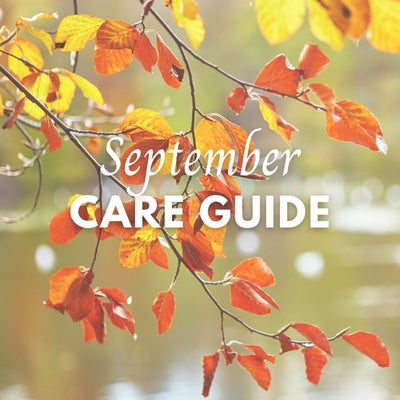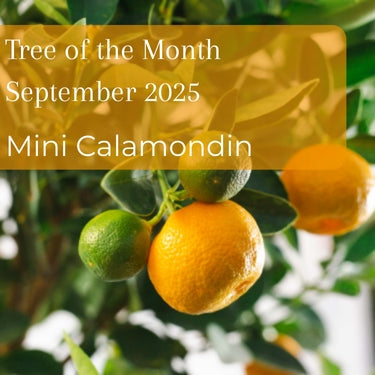So you want to know how to grow truffles? Then you’ve come to the right place. Truffles are one of the most expensive funghis in the world, not only this but they’re a delicious delicacy with unusual flavours and aromas that add new depths to plenty of recipes.
In this post we will tell you:
How to plant your truffle tree
How to care for your truffle trees
How to grow truffles
And finally, how to find and harvest your well earned, delicious truffles
So, if you’ve recently purchased or been gifted a truffle tree and you need to find out what to do with it. Keep reading!
So, if you’ve recently purchased or been gifted a truffle tree and you need to find out what to do with it. Keep reading!
How to grow and harvest truffles

What are truffles?
Truffles are a prized type of fungus that grow underground on the roots of inoculated trees. They’re a well loved and luxury ingredient used in cooking providing a uniquely pungent flavour loved by many. There are many different truffle varieties out there from black truffles, burgundy truffles and the most expensive white truffle. Depending on the variety that can be sold for anywhere between £30 to well over £1,000
Can you Grow Truffles in the UK?
The truffle fungus has evolved to grow underground and in the process, has created a symbiotic relationship with a variety of different tree species, each providing the other with some form of nourishment. The truffles provide beneficial nitrogen directly to the tree’s roots and the tree provides the truffle with specific sugars created through photosynthesis. Something the underground fungi cannot create itself. There are certain species of tree that support the growth of truffles in the UK, many of these species are trees that are already hardy in British climates meaning that you can absolutely grow truffles in the UK.
Which Trees Support the Growth of Truffles?

The roots of certain trees can be inoculated with truffles spores to support the growth of the fungus. A lot of our UK native trees such as hazel, oak and beech can all be innoculated.
We have quality stock of both the hazel truffle tree and oak truffle tree.
Where to plant your Truffle Tree
To start, choose a planting location large enough to accommodate the tree’s growth. Many native trees can grow to great heights over many decades, be sure to bear this in mind.
Both of our hazel and oak truffle trees can grow quite large so ensuring the tree has enough room to grow is essential.
Next, test the pH of the soil. Truffle trees grow best in soil that is well-draining with a high (alkaline) pH. Most local garden centres will stock soil testing kits. The perfect pH level in soil is between 7.5 and 8.3. If you find that your soil is a particularly low pH and too acidic for your truffle tree then we recommend improving the soil by raking small amounts of lime through the top. Most local garden centres will also stock lime that can be added to the soil
How to plant your truffle tree

Now you’ve chosen the location for your native tree and tested your soil, you’re ready to plant. First, dig a hole that is around the same size as the pot the tree is currently in. Secondly, you will need to remove the tree from the pot. Be very careful with this step, you want to cause as little disruption as possible to the soil in the pot and try to keep all the soil intact with the roots. This is the part where all the spores are located so keeping as much as possible is important.
Place the root ball and surrounding soil straight into the hole, make sure that the soil level from the pot matches ground level. If any soil was lost when removing from the pot you can add this back into the planting hole around the tree before backfilling any gaps with top soil.
Once this is completed, firm down and give the tree a good watering. It’s important to keep the tree well watered the first few weeks after planting to allow the roots some time to establish in their new home. Just make sure that the ground doesn’t become waterlogged.
Extra tips after planting
If you are planting in an open area known for lots of wildlife, we recommend adding in some sort of tree guard to protect young trees from grazing animals such as deer and rabbits.
The same goes when planting in exposed sites. Consider adding a tree stake for support and that little bit of extra protection
How to Care for Truffle Trees

Once you’ve planted your truffle tree the only thing left to do is take care of it well so that you can get a great truffle crop in a few years time.To keep your inoculated tree in good health follow these steps.
Water the tree well in the first few years after planting, this allows for a strong root system to form.
Keep the area around the base of the tree weed free. Even though the weeds may only be small they can rob the tree of essential nutrients when it comes to producing truffles.
This goes for most trees, but particularly for hazel trees, make sure to remove any fallen leaves from the ground around the tree. As the leaves decompose into the soil they can decrease the pH creating a more acidic environment.
How and when to look for truffles: how long does it take for a tree to produce truffles?
Healthy truffle trees that are well looked after have been known to produce truffles after just 4 short years. This, however, very much depends on the individual tree species and the conditions it’s grown in.
On average, truffle trees usually take anywhere between 5-7 years to start producing truffles. Hazel trees mature much quicker than oak trees meaning they will produce truffles quicker.
Due to the amount of time it can take to start producing truffles, it’s advised to plant a few different trees for harvests at different times. This is why we offer our trees in singles, packs of 4 and even packs of 20 for a full grove (if you’ve got the space).
Summer truffles will ripen and be ready for harvest between June and November.
How to Find Truffles
Truffles produce a pungent yet distinct aroma. In the wild they are sniffed out by pigs and for large commercial truffle farms there are specialised dogs that have been trained to look for them.
While most of us don’t have access to these kinds of resources, there are ways you can sniff out ripe truffles for yourself (literally).
Between just a couple of trees, searching for truffles is simple enough. For anymore than 10 then more efficient ways can be found to discover ripe truffles.
Check the base of the tree, looking in particular for small cracks in the ground. Disturb the soil gently and underneath these cracks you may be greeted with a few truffles.
There is a fly known as a Truffle Fly that will hover above the ground where ripe truffles lie. Lightly removing the top layer of soil will reveal even more smaller flies just below the surface. This is an indication that ripe truffles are growing beneath the area.
The truffle is well known for its scent and this is the main indication that ripe truffles may be around. While a human's sense of smell might not be as strong as that of a pig or dog, the aroma released is quite strong and it’s possible to get down to soil level and sniff them out yourself.
Another way to search is by disturbing the top layer of soil just to see if there is a truffle below but this can be quite a destructive way of searching and is least recommended.


